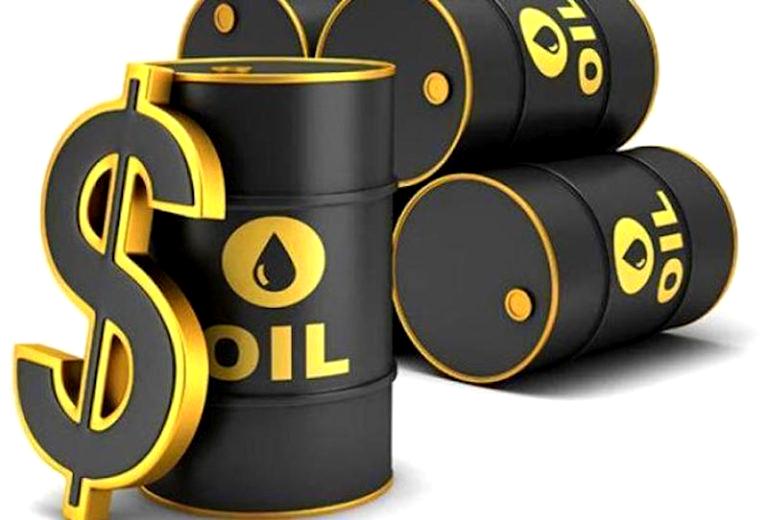The World Bank said on Monday it expected global oil prices to average $90 a barrel in the fourth quarter and fall to an average of $81 in 2023 as slowing growth eases demand, but warned that an escalation of the latest Middle East conflict could spike prices significantly higher. Meanwhile Oil slipped more than 3% on Monday with U.S. crude oil futures falling more than $3 a barrel as fears eased about the Israel-Hamas war disrupting supply from the region and as investors grew cautious ahead of this week’s U.S. Federal Reserve meeting. Brent crude futures fell $2.90, or 3.21%, to $87.58 a barrel, while U.S. West Texas Intermediate crude was down $3.14, or 3.67%, at $82.40. Crude had jumped 3% on Friday after Israel stepped up ground incursions into Gaza, stoking worries the conflict could expand in a region that accounts for a third of global oil output. However, that concern was fading on Monday, analysts said.
“The war premium has come out of the market,” said Phil Flynn, analyst at Price Futures Group. “It’s a situation where over the weekend the war seemed to intensify, but there seems to be no disruption to supply.” Israeli troops and tanks attacked Gaza’s main northern city from the east and west on Monday, three days after it began ground operations in the Palestinian enclave. “There is a propensity for market users in all their guises to have at least some oil length going into the weekends and when the fear of conflict spread shows no validation come the early hours of Monday mornings’ openings, that fear hedge is ordinarily unwound,” said John Evans of oil broker PVM.
The World Bank’s latest Commodity Markets Outlook report noted that oil prices have risen only about 6% since the start of the Israel-Hamas war, while prices of agricultural commodities, most metals and other commodities “have barely budged.” The report outlines three risk scenarios based on historical episodes involving regional conflicts since the 1970s, with increasing severity and consequences. A “small disruption” scenario equivalent to the reduction in oil output seen during the Libyan civil war in 2011 of about 500,000 to 2 million barrels per day (bpd) would drive oil prices up to a range of $93 to $102 a barrel in the fourth quarter, the bank said. A “medium disruption” scenario – roughly equivalent to the Iraq war in 2003 – would cut global oil supplies by 3 million to 5 million bpd, pushing prices to between $109 and $121 per barrel. The World Bank’s “large disruption” scenario approximates the impact of the 1973 Arab oil embargo, shrinking the global oil supply by 6 million to 8 million bpd.
This would initially drive up prices to $140 to $157 a barrel, a jump of up to 75%. “Higher oil prices, if sustained, inevitably mean higher food prices,” said Ayhan Kose, the World Bank’s Deputy Chief Economist. “If a severe oil-price shock materialises, it would push up food price inflation that has already been elevated in many developing countries.” The World Bank report said that China’s oil demand was surprisingly resilient given strains in the country’s real estate sector, rising 12% in the first nine months of 2023 over the same period of 2022. Oil production and exports from Russia have been relatively stable this year despite Western-imposed embargoes on Russian crude to punish Moscow over its invasion of Ukraine, the World Bank said. Russia’s exports to the European Union, the U.S., Britain and other Western countries fell by 53 percentage points between 2021 and 2023, but these have been largely replaced with increased exports to China, India and Turkey – up 40 percentage points over the same period. “The price cap on Russian crude oil introduced in late 2022 appears increasingly unenforceable given the recent spike in Urals prices,” the World Bank said, referring to the benchmark Russian crude, currently quoted in the mid-$70s per barrel range, well above the G7-led $60 price cap for Russian crude. The cap aims to deny buyers of Russian crude the use of Western-supplied services, including shipping and insurance, unless cargoes are sold at or below the capped price. It seems that by putting together a “shadow fleet” (of tankers), Russia has been able to trade outside of the cap; the official Urals benchmark recently breached the cap for more than three months, averaging $80 per barrel in August,” the report said.
If the Israel-Hamas conflict escalates, policymakers in developing countries will need to take steps to manage a potential increase in headline inflation, the World Bank said. It added that governments should avoid trade restrictions such as export bans on food and fertilizer because they can often intensify price volatility and heighten food insecurity. “Despite an escalation in the Hamas-Israel war, the ground invasion was widely expected,” added CMC Markets analyst Tina Teng. “The weekend play out signals no further expansion into a wider regional war, which caused a retreat in oil prices.” Investors are also focused on the outcome of Wednesday’s Federal Reserve meeting as well as on what earnings from the likes of tech giant Apple Inc might indicate regarding the prospects for an economic slowdown. The Fed is widely expected to keep interest rates unchanged, while the central banks of Britain and Japan are also set to review their policies this week. Meanwhile, German inflation eased in October, pointing to a substantial cooling in headline inflation in the euro zone. China reports its October manufacturing and services PMIs this week, with investors looking out for more signs that the economy of the world’s top crude importer is stabilising.

